The opening match of Group D at Moscow’s Spartak Stadium saw a debut for Iceland in a FIFA World Cup against two-time World Cup Champions, Argentina, lead by Lionel Messi. Hallgrimsson’s players wanted to start strong by stopping La Albiceleste’s attacking force and they were very confident in the way they went about achieving a good result on their World Cup debut.
After Iceland’s success during Euro 2016 in France, reaching the quarter-finals, Heimir Hallgrimsson has a clear target for the 2018 World Cup, “our goal is to progress from the group. If we do that, we’ve finished ahead of two really good teams”.
Team News
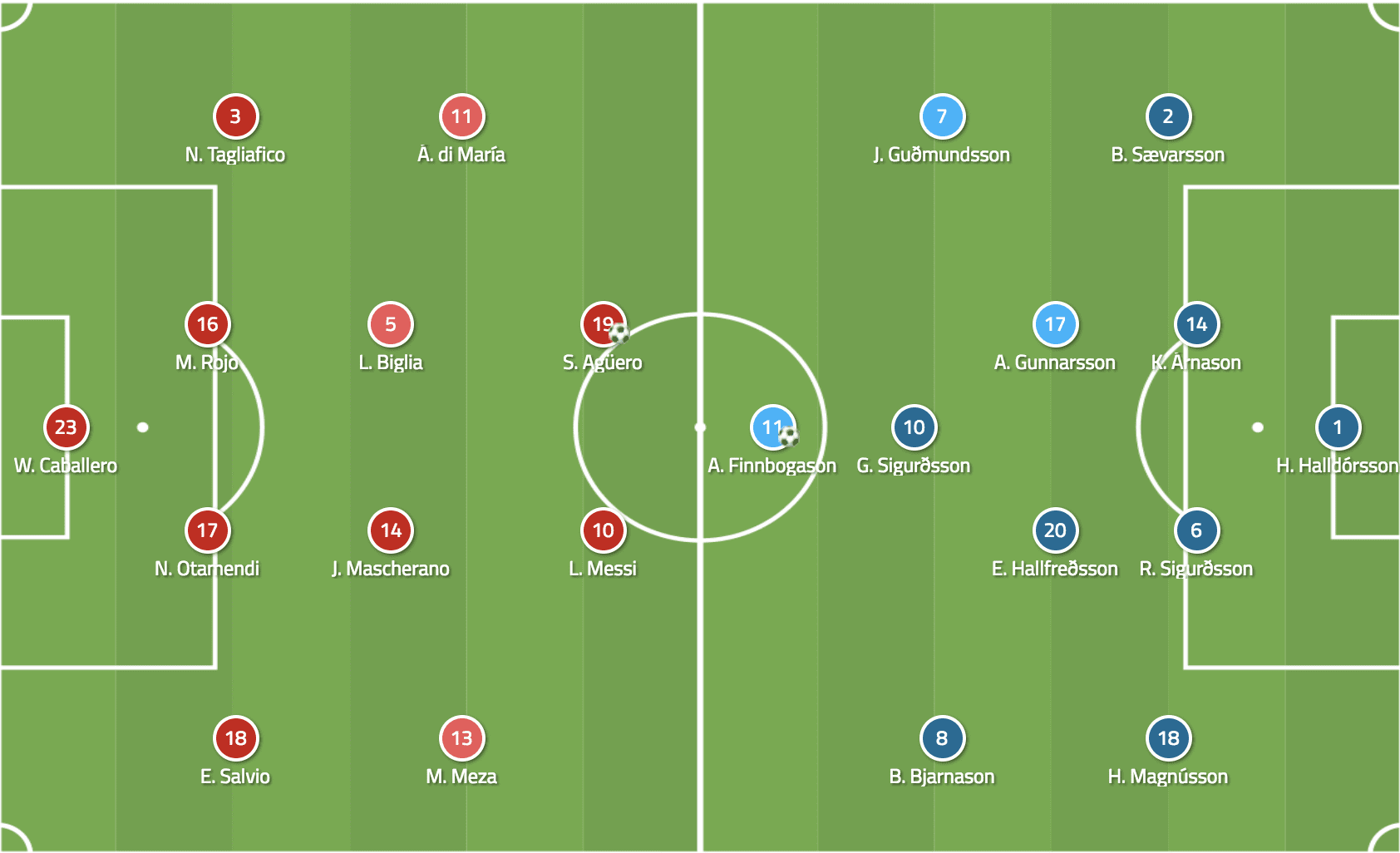
Aron Gunnarsson was back in the Icelandic starting line-up after missing the pre-World Cup preparation matches against Norway and Ghana.
Jorge Sampaoli opted for Marcos Rojo to play next to Otamendi, Lucas Biglia next to Mascherano in the middle and Sergio Agüero up front instead of Higuain.
Iceland’s defensive strategy
When Argentina were taking their goal kicks, Iceland were pressing high in order to force a mistake or to force Caballero to play long balls where the Icelandic players were going to have a massive advantage due to their height and aerial ability compared to players like Agüero, Di Maria or Messi.
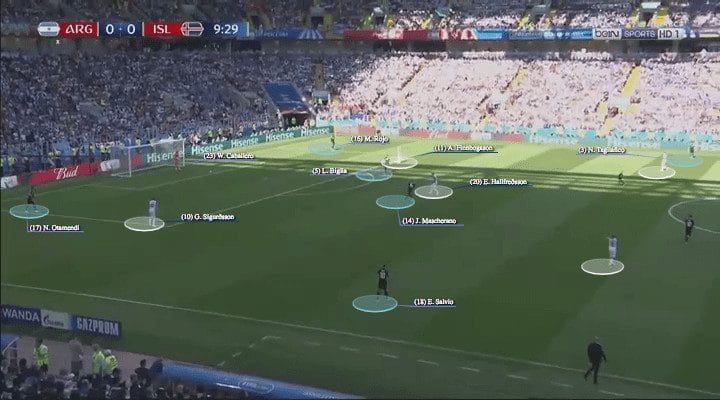
As seen in the picture above, Sigurdsson and Finnbogason were marking Otamendi and Rojo when Caballero was taking goal kicks and Hallfredsson was pushing high to avoid short passes to Biglia or Mascherano just outside Argentinian box.
In the 9th minute, Rojo and Caballero were forced to lose possession just outside their box but the Aston Villa player, Bjarnason, could not finish the chance inside the box.
Hallgrimsson’s defensive plan when Rojo or Otamendi were in possession without pressure was to defend with a low block forming different shapes with his eleven players inside their own half to stay compact and prevent any forward passes to penetrate their back line.
In the following set of pictures, we can notice the different shapes Iceland were adopting when out of possession.
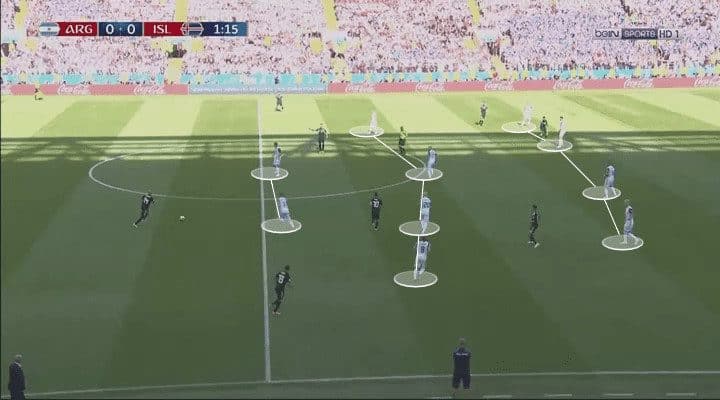
In the picture above, Mascherano is in possession and Iceland form a 4-4-2 formation in their own half while in the next picture, Tagliafico has possession in the final third and Icelandic shape changes to a 5-4-1 where Sigurdsson drops to the midfielders line. Notice the distance between Icelandic defenders line and midfielders line to stay compact.

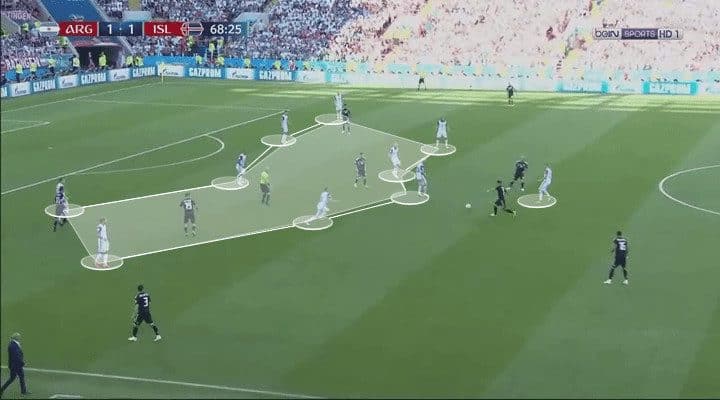
In the picture above, Argentina are in possession in Iceland half, Sigurdsson drops to the form a line of 5 midfielders.
Iceland’s compactness between their line of defenders and line of midfielders was going to force Agüero and Messi to drop deep to receive the ball but without causing any damage to the Icelandic defensive plan.
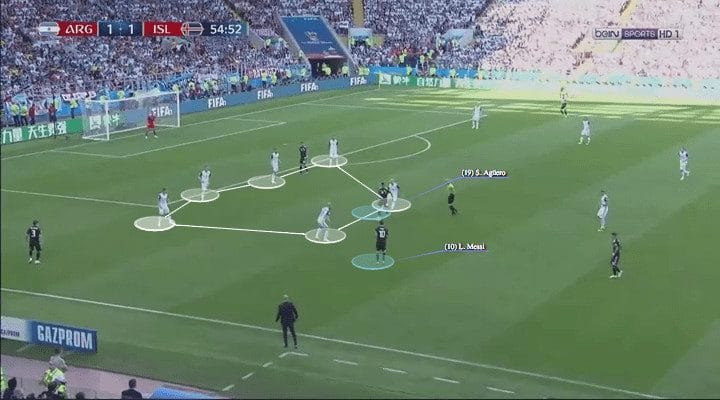
In the next sequence of pictures, notice how Messi and Agüero are moving between Iceland defenders and midfielders but due to the lack of space to receive, Agüero drops to become available.
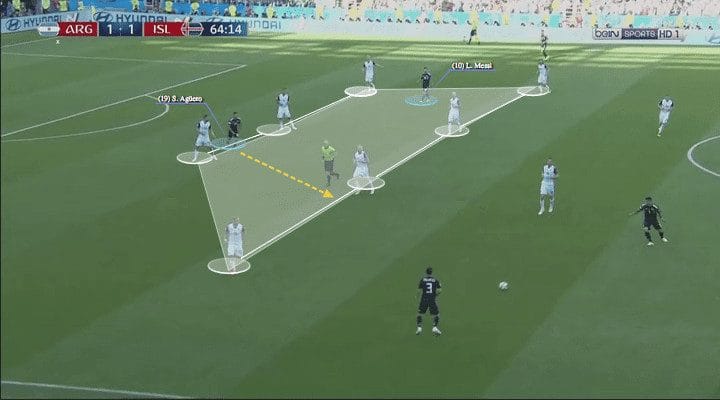
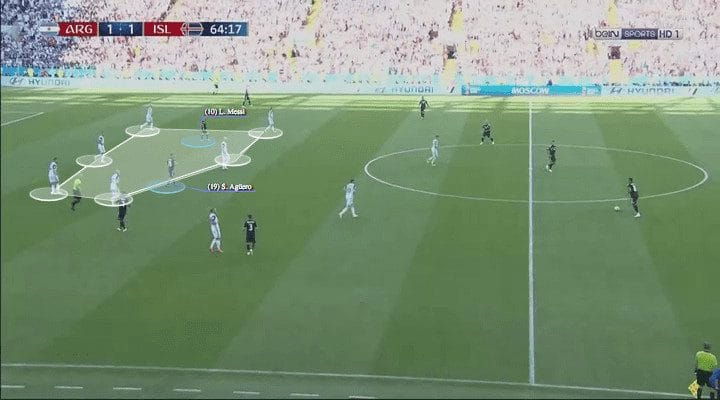
Icelandic players heat map is a clear example of their match plan against Argentina. Notice that Sigurdsson and Finnbogason spent more time in their own half than in Argentina’s half.
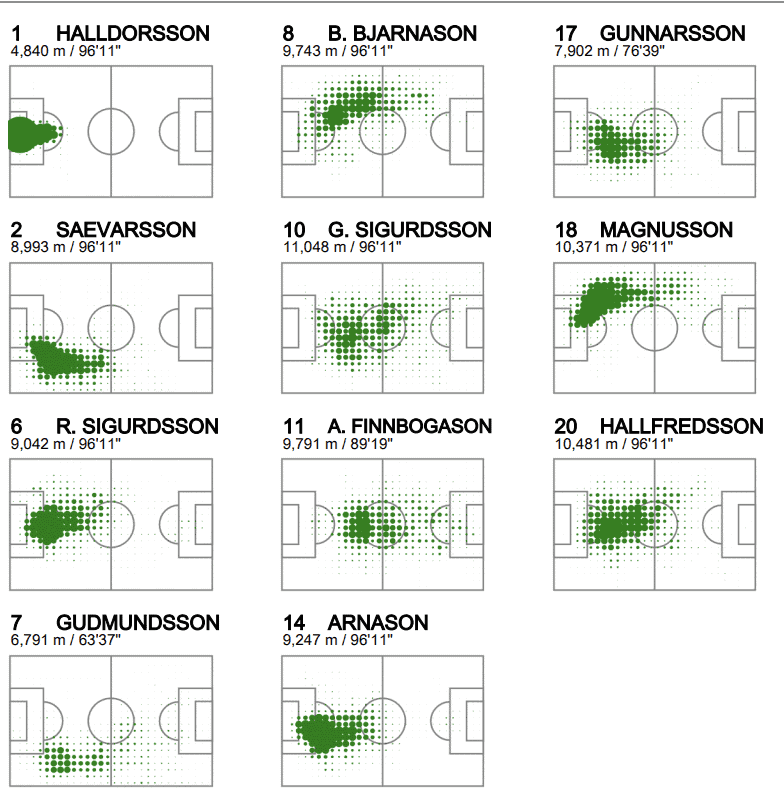
The following picture is another great example of how Iceland stayed compact during the match. 92nd minute and ALL Icelandic players inside the box to stop Messi.
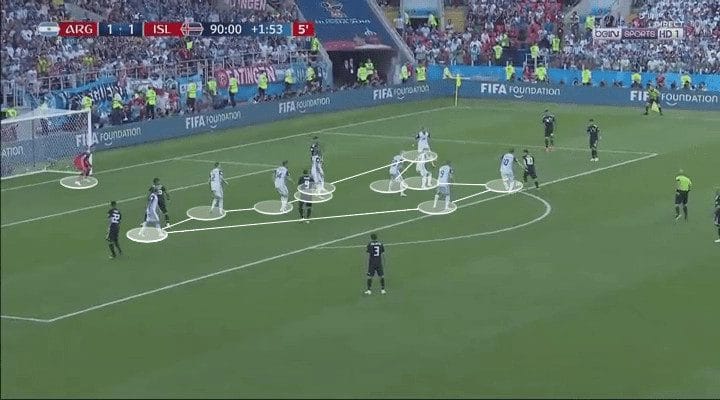
Argentina in possession
Argentina dominated the ball 72% of the possession, but despite having complete control of possession, they were extremely ineffective to break the Icelandic defensive wall.
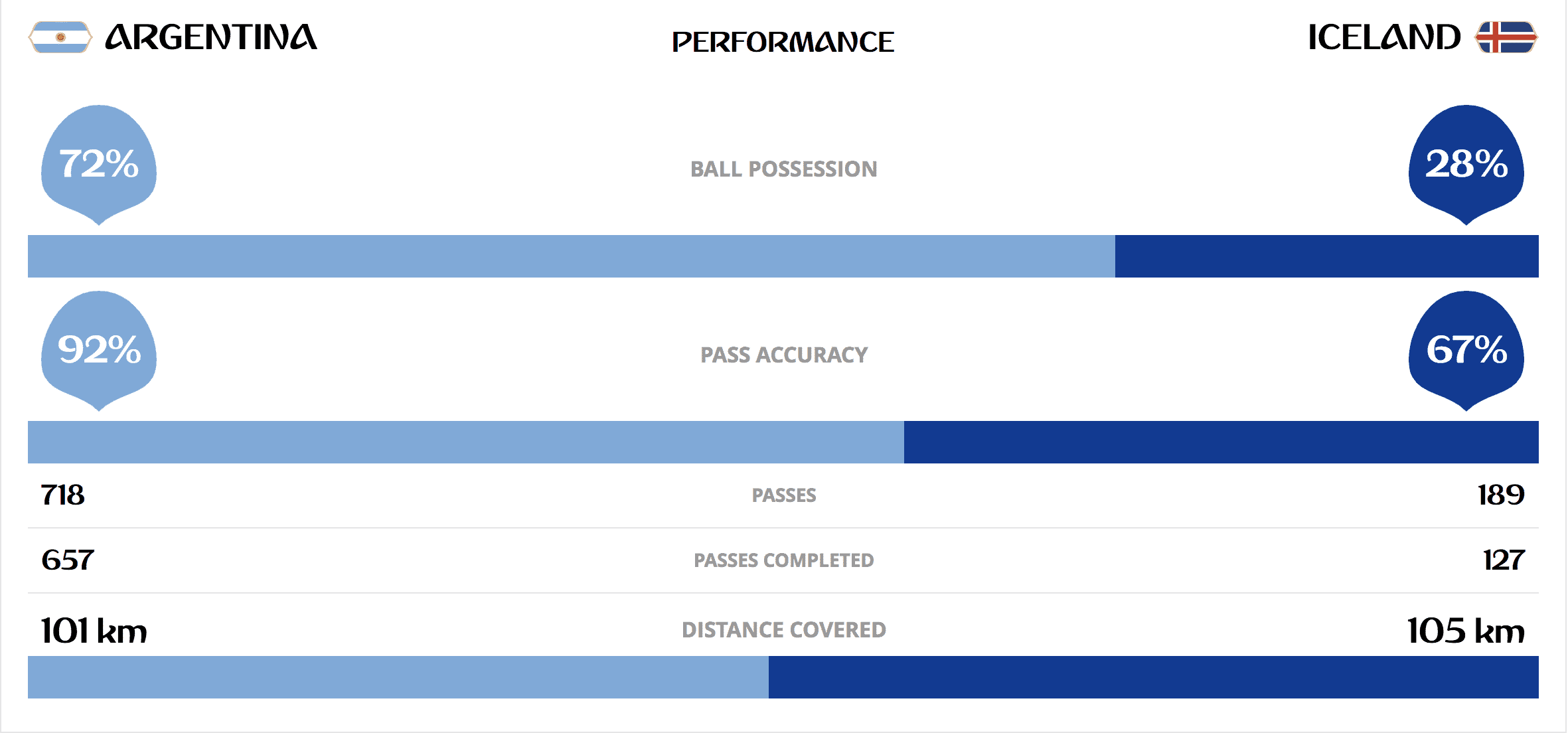
The lack of movement off the ball in the final third (by certain players), the lack of creativity and lack of support were some of the factors which contributed to La Albiceste’s inability to find the net and win their first match in Russia.

Messi is in possession, just outside Iceland’s box, Agüero and di María inside the box marked while Tagliafico and Banega outside the box but no movement off the ball to create different options to penetrate Iceland defensive organisation.
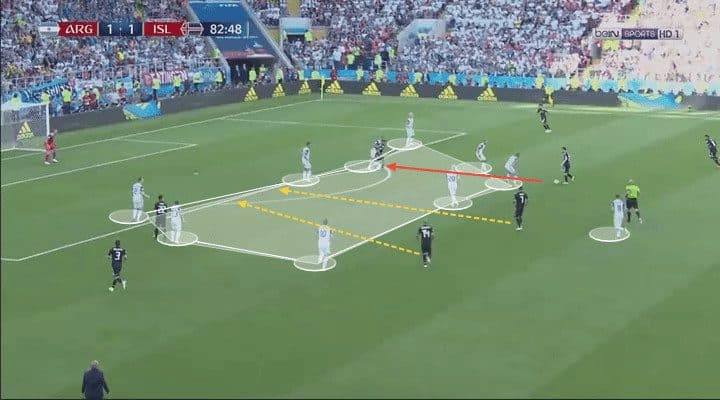
Messi, again, in possession in the final third. Iceland’s compactness prevents any forward passes (red arrow) to Agüero but there are no forward runs by Banega or Mascherano to engage Iceland back line.
As we can see in Argentina’s pass map provided by @11tegen11 using Opta data, Argentina were trying to play through the middle very often, with Messi receiving the majority of the passes as expected.
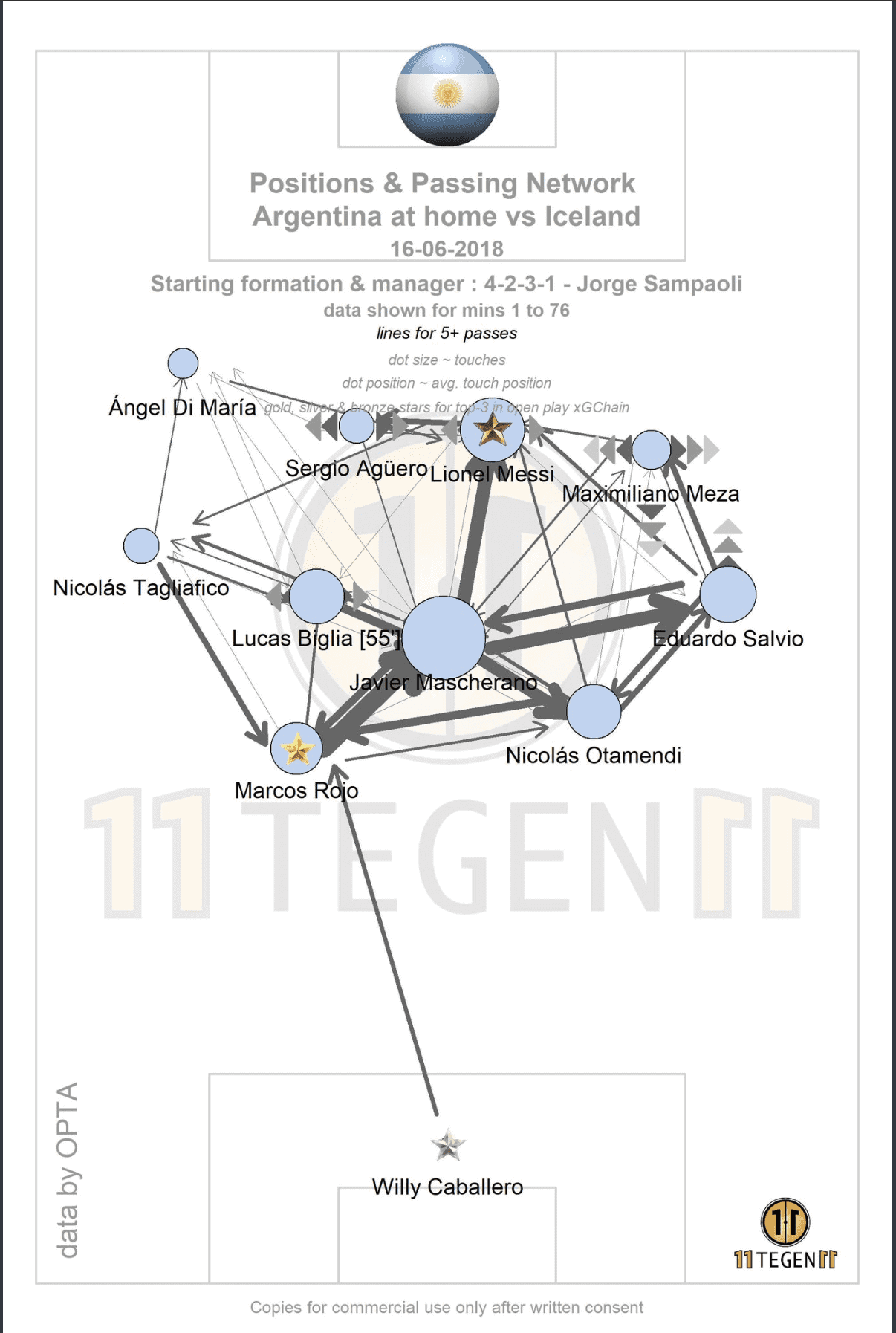
When Argentina attacked in wide areas, the number of players inside the box to attack the crosses or the movement off the ball from the Argentinian attackers was poor to make runs to different areas inside the box (far post, near post). The following pictures are great of examples of the aforementioned points.
Salvio inside Iceland’s box, Agüero isolated while Messi, Tagliafico, di María, Meza and Banega observed Salvio deliver a cross, notice how Iceland were defending with eight players inside their box.
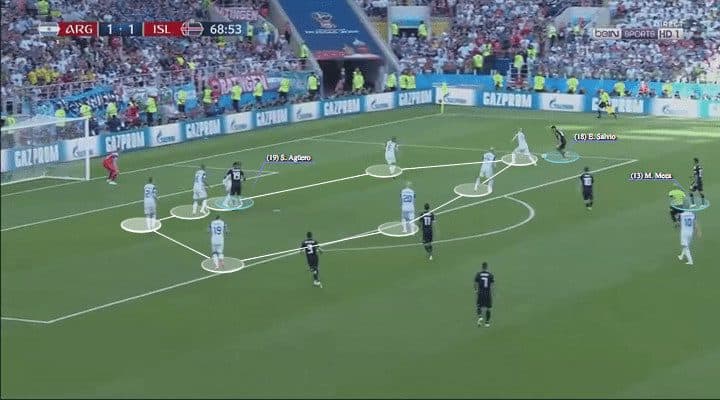
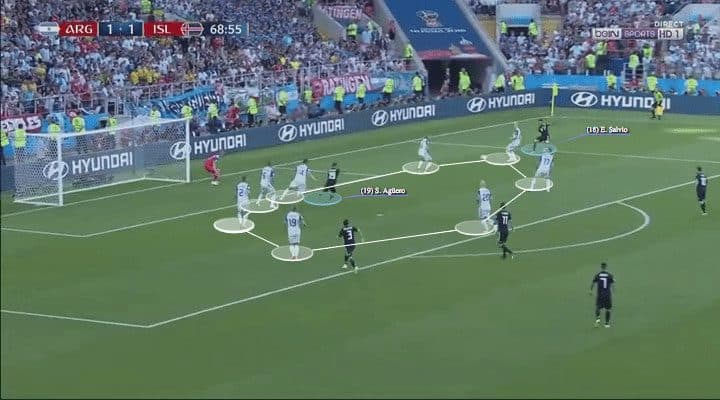
On this occasion, Pavón was attacking on the left side (1v1 situation), NO overlap by Tagliafico to create an overload; inside Iceland’s box (8v3 situation) Messi, Higuain and Agüero waiting for the cross.
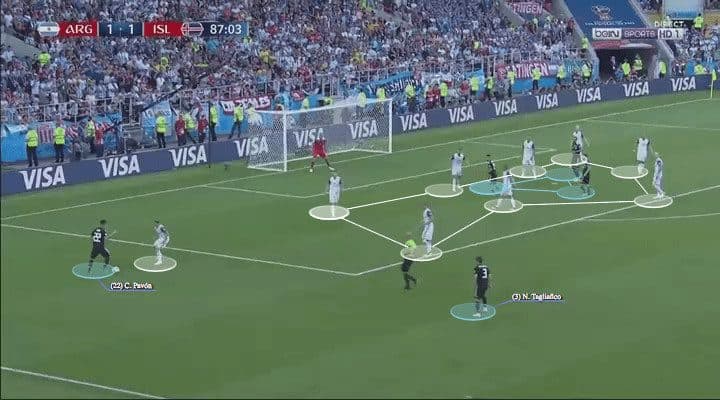
Pavón made a good run to find the byline and deliver a cross but notice how Tagliafico is almost on the same spot of the pitch as are Messi, Higuain and Agüero instead of making different runs inside the box.
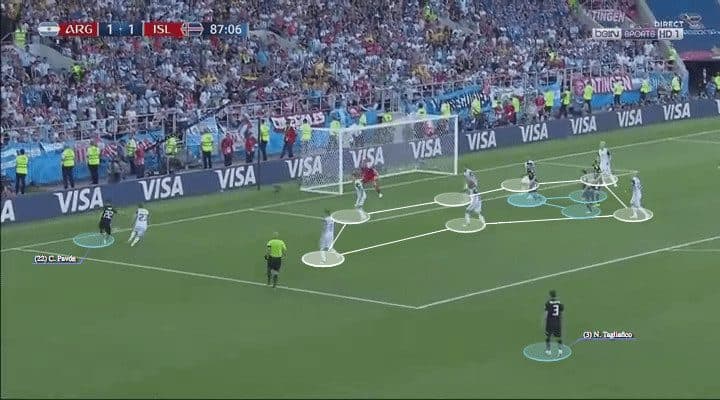
Conclusion
Iceland showed great character after conceding the first goal in the 19th minute to equalise just after 4 minutes. Hallgrimsson’s match plan worked almost to perfection, giving them a good start in their group.
Sampaoli and his players will have to improve different phases of their game if they want Messi to lift the World Cup trophy on the 15th of July at Luzhniki Stadium in Moscow, Russia.






Comments